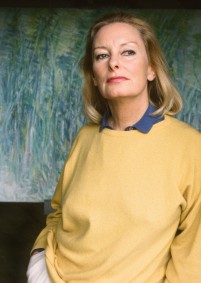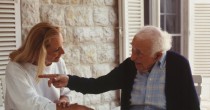
Eliette von Karajan has made many appearances as sponsor and patron of the arts, but little is known about the painter Eliette von Karajan. This is not least because up to now she has always been her own harshest critic when it comes to displaying her works. There is one exception: the Deutsche Grammophon special edition released in 1982 commemorating 100 years of the Berlin Philharmonic with one hundred symphonic masterpieces directed by Herbert von Karajan; Eliette von Karajan provided a selection of her own paintings for the record sleeve.
Eliette von Karajan’s interest in painting began early on in her life. During her modelling assignments in London, she enrolled in an art academy but could not pursue her study of arts any further at the time because of her professional commitments and the travelling involved. It wasn’t until several years later when Eliette von Karajan decided that her two daughters, Isabel and Arabel, should take art lessons that she herself also returned to painting. The stimulus for this was their visit together to Oscar Kokoschka’s “Schule des Sehens” (School of Seeing) in Salzburg. Further artistic motivation was brought about by encounters with the surrealist Ernst Fuchs in Vienna, the Dusseldorf-based Joerg Immendorf and the Salzburg painter Herbert Breiter, who was a welcome guest in the Karajan household in Anif: “I learnt so much about brushwork and colouring from him. He also introduced me to the technicalities of etching and watercolours and showed me how to prepare canvases,” remembers Eliette von Karajan.
In Saint-Tropez, it was most notably Antoni Clavé and Marc Chagall who encouraged Eliette von Karajan in her painting and whose valuable suggestions provided direction.
